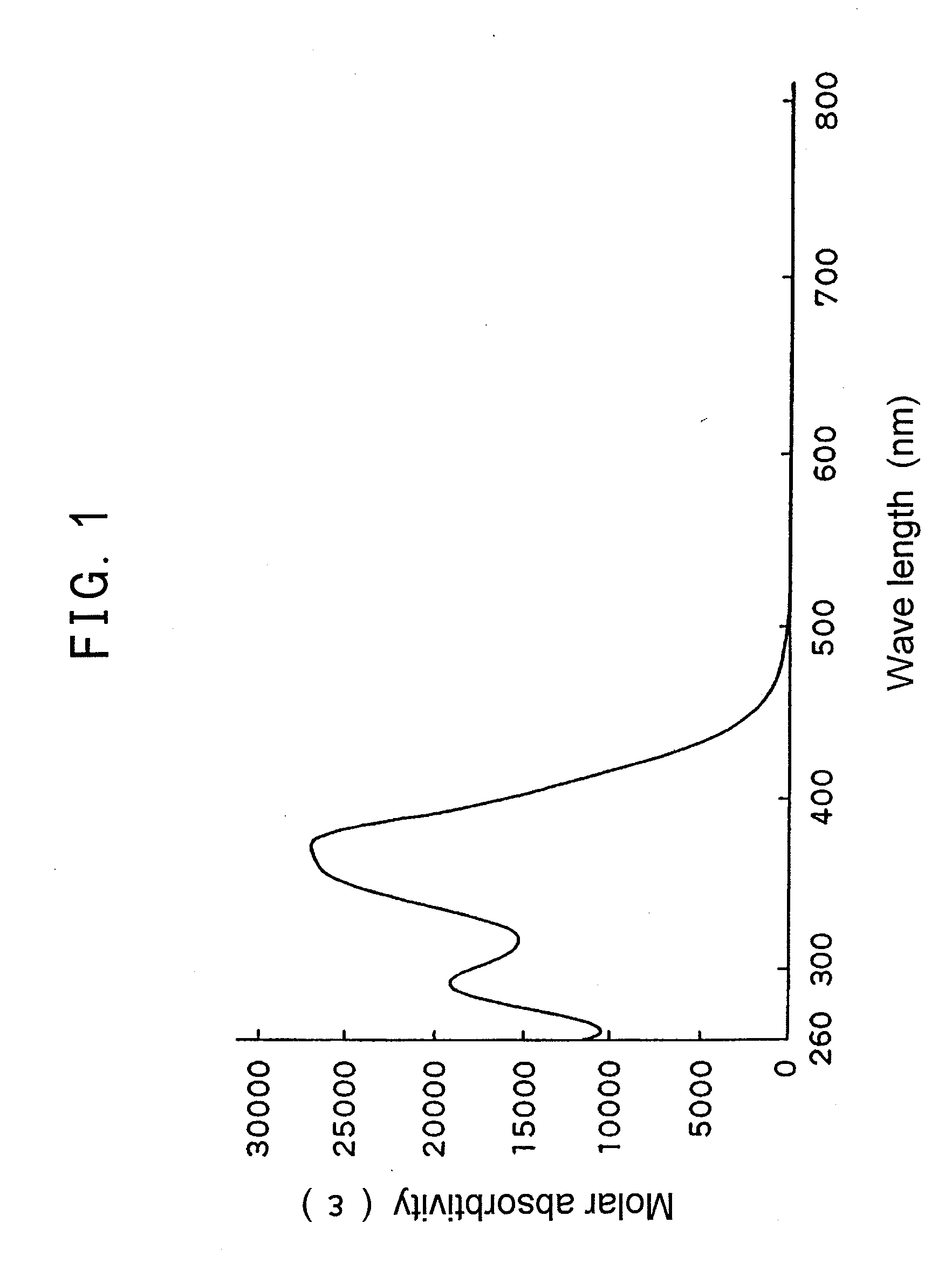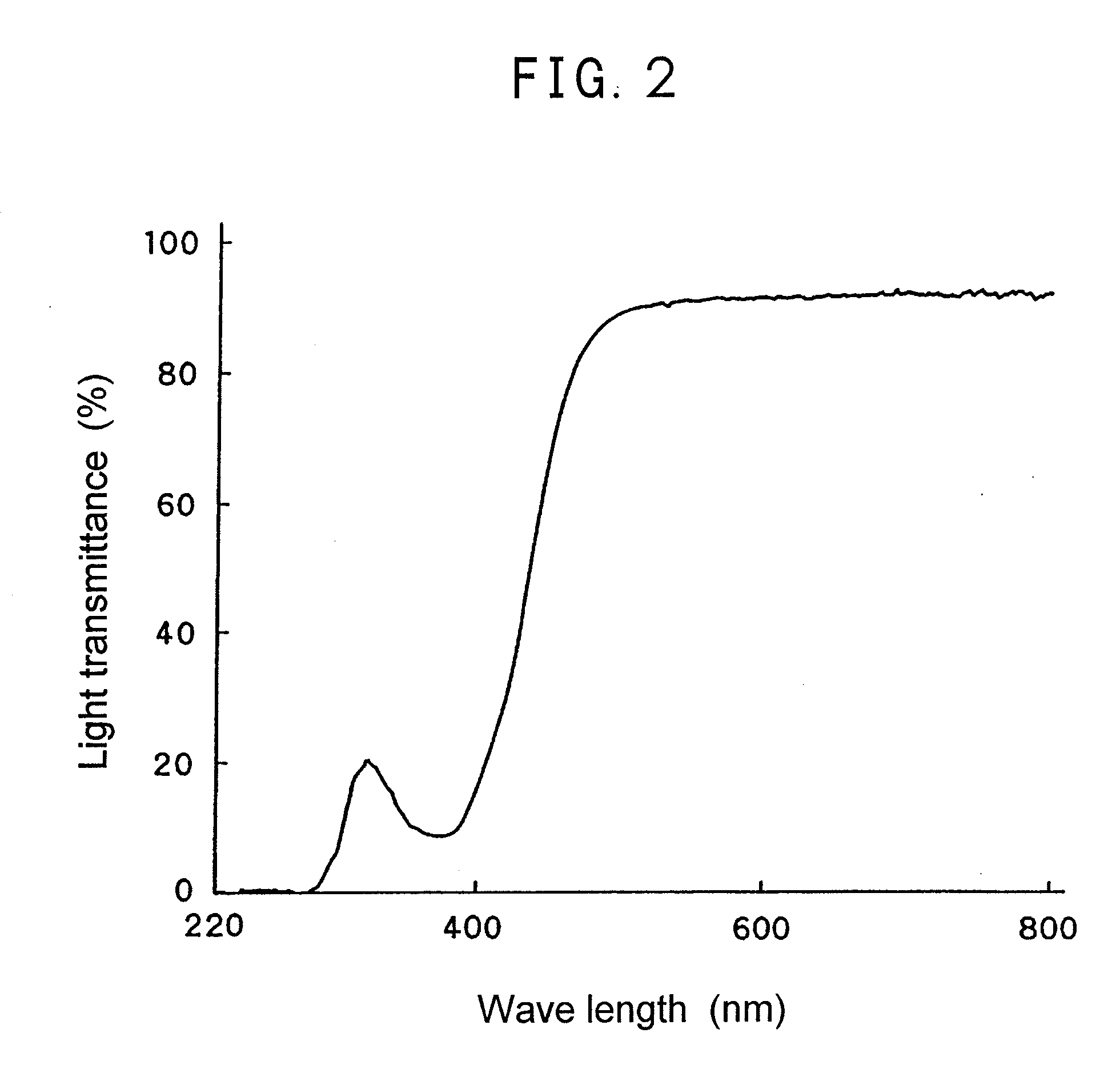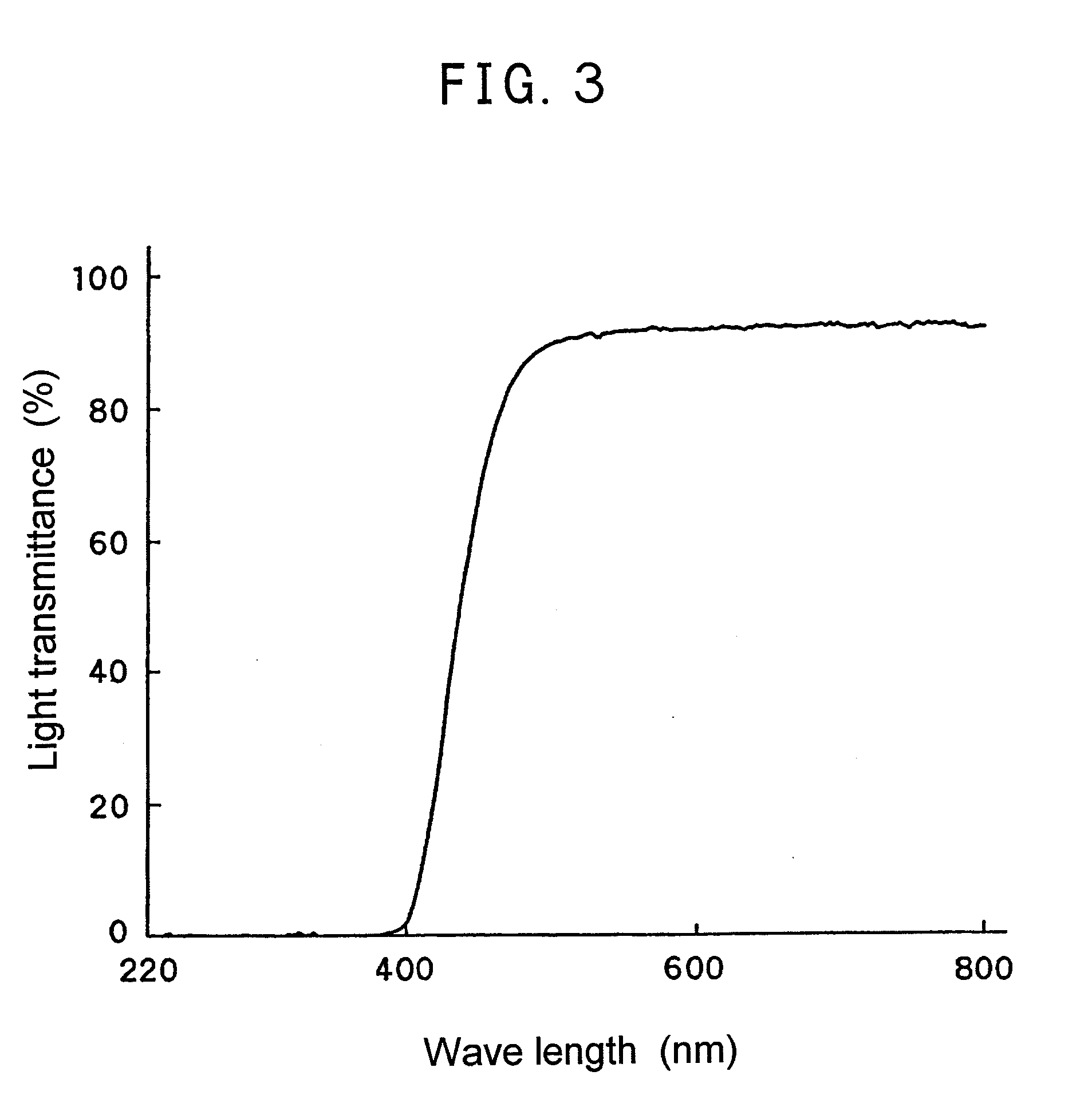Novel Polymerizable Dye and Ophthalmic Lens Containing the Same
- Summary
- Abstract
- Description
- Claims
- Application Information
AI Technical Summary
Benefits of technology
Problems solved by technology
Method used
Image
Examples
example
Example 1
Synthesis of 2,4-dihydroxy-5-(4-(2-(N-(2-methacryloyloxyethyl)carbamoyloxy)ethyl)phenylazo)benzophenone (BMAC) (catalyst: dibutylstannic (IV) dilaurate, a compound for introducing polymerizable group: 2-isocyanate ethyl methacrylate)
[0062]In a 500 ml three-necked flask, 6.00 g (0.0166 mol) of 2,4-dihydroxy-5-(4-(2-hydroxyethyl)phenylazo) benzophenone (UV-PEP) was charged, and 250 ml of dichloromethane was added to dissolve. To the resultant were added 3.85 g (3.51 mL, 0.0248 mol) of 2-isocyanate ethyl methacrylate and dropped by a syringe two drops of dibutyl tin (IV) dilaurate. After about 23 hours, the reaction solution was transferred to a 1 L recovery flask and dichloromethane was evaporated in vacuo. To the residue was added 300 mL of methanol to give a suspension, followed by stirring and washing for about 2 hours and filtering in vacuo. The residue on a filter paper was transferred to a 2 L Erlenmeyer flask and 1.5 L of ethanol was added thereto to dissolve under ref...
example 2
Synthesis of BMAC (catalyst: tris(2,4-pentane dionate) iron (III), a compound for introducing polymerizable group: 2-isocyanate ethyl methacrylate)
[0068]In a 1 L recovery flask, 15.00 g (41.4 mmol) of 2,4-hydroxy-5-(4-(2-hydroxyethyl)phenylazo) benzophenone (UV-PEP) and 0.420 g (1.19 mmol) of tris(2,4-pentane dionate) iron (III) were charged, and 700 ml of dichloromethane was added to dissolve. To the resultant were added 8.80 mL (62.2 mmol) of 2-isocyanate ethyl methacrylate, followed by stirring with installing a Dimroth condenser. After about 127 hours, the reaction solution was evaporated in vacuo. To the residue was added 1 L of methanol to give a suspension, followed by stirring and washing for about 1 hour and filtering in vacuo. The residue on a filter paper was dissolved in 200 mL of chloroform. About 50 g of silica gel was suspended in a suitable amount of chloroform and poured into Hirsch type funnel (Φ60 mm) wherein a filter paper was equipped to fill the paper. A filter...
example 3
[0080]0.03 part by weight of BMAC synthesized in Example 1, 100 parts by weight of phenoxyethyl acrylate, 15 parts by weight of ethyl acrylate and 0.5 part by weight of 2,2′-azobis(2,4-dimethyl valeronitrile) were blended homogeneously, and the resultant was poured into a lens mold. Then the blended solution was polymerized at 80° C. for 40 minutes to form a lens. The resulting lens was used as a sample for measuring light transmittance of a ray having a wave length of 220 to 800 nm (FIG. 2). Further, after the lens was subjected to elusion treatment by immersing in ethanol at 40° C. for 24 hours, the light transmittance was measured again, whereupon no change in the spectrum before and after the elution treatment. This shows that the polymerizable dye was chemically bonded in the material.
PUM
 Login to View More
Login to View More Abstract
Description
Claims
Application Information
 Login to View More
Login to View More - R&D
- Intellectual Property
- Life Sciences
- Materials
- Tech Scout
- Unparalleled Data Quality
- Higher Quality Content
- 60% Fewer Hallucinations
Browse by: Latest US Patents, China's latest patents, Technical Efficacy Thesaurus, Application Domain, Technology Topic, Popular Technical Reports.
© 2025 PatSnap. All rights reserved.Legal|Privacy policy|Modern Slavery Act Transparency Statement|Sitemap|About US| Contact US: help@patsnap.com



